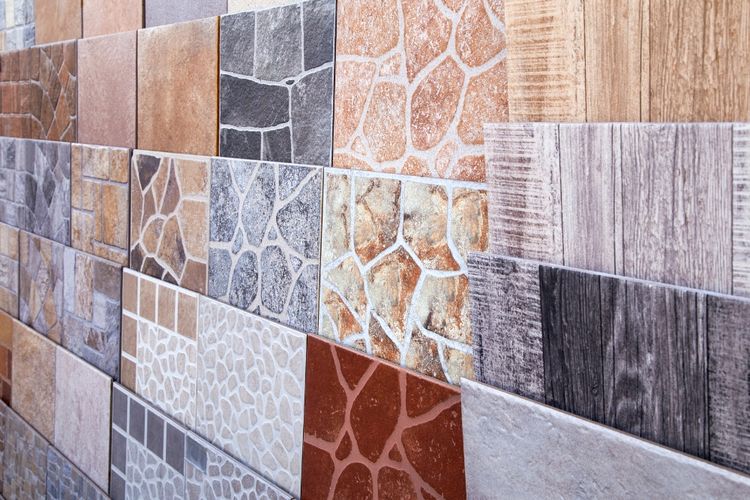Explore Innovative Rubber and Vinyl Flooring Solutions for Your Kitchen in the US in 2025
Modern kitchens demand flooring that combines durability, water resistance, and aesthetic appeal. Rubber and vinyl flooring have emerged as practical solutions that address these needs while offering homeowners flexibility in design and installation. These materials provide excellent moisture protection, easy maintenance, and cost-effective alternatives to traditional flooring options, making them increasingly popular choices for kitchen renovations across American households.

Kitchen flooring faces unique challenges including moisture exposure, heavy foot traffic, spills, and temperature fluctuations. Traditional materials like hardwood or carpet often struggle in these demanding environments, leading homeowners to seek more resilient alternatives. Rubber and vinyl flooring technologies have advanced significantly, offering solutions that meet both functional requirements and design preferences for modern kitchen spaces.
Self-Adhesive Vinyl Flooring for Kitchen Applications
Self-adhesive vinyl flooring represents one of the most user-friendly installation methods available today. These products feature pre-applied adhesive backing protected by removable paper, allowing direct application to properly prepared subfloors. The installation process requires minimal tools and professional expertise, making it accessible for DIY enthusiasts. Quality self-adhesive vinyl products offer excellent water resistance, stain protection, and dimensional stability in kitchen environments.
Modern self-adhesive vinyl comes in various formats including planks that mimic hardwood, tiles resembling natural stone, and sheet goods for seamless coverage. The adhesive technology has improved to provide strong initial tack while allowing repositioning during installation. Proper surface preparation remains crucial for long-term performance, requiring clean, level, and dry substrates.
Vinyl Wall Covering Integration with Floor Design
Vinyl wall covering creates cohesive design schemes when coordinated with vinyl flooring systems. This approach offers practical benefits in kitchen environments where walls face similar challenges from moisture, grease, and cleaning chemicals. Vinyl wall products designed for kitchen use feature enhanced durability and cleanability compared to standard wallcoverings.
Coordinating wall and floor vinyl products allows for seamless transitions and unified color schemes. Many manufacturers offer matching or complementary patterns across their wall and floor product lines. Installation techniques for vinyl wall covering require attention to proper adhesive selection and surface preparation to ensure long-term adhesion and appearance retention.
Vinyl for Kitchen Flooring Performance Characteristics
Vinyl flooring designed specifically for kitchen applications incorporates enhanced wear layers, improved dimensional stability, and superior water resistance. These products undergo rigorous testing for slip resistance, stain resistance, and durability under typical kitchen conditions. Advanced vinyl formulations resist damage from common kitchen hazards including hot cookware, acidic spills, and heavy appliance movement.
Thickness variations in vinyl kitchen flooring range from 2mm for basic residential applications to 8mm or more for commercial-grade installations. Thicker products generally offer better sound dampening, improved comfort underfoot, and enhanced durability. Surface textures vary from smooth finishes for easy cleaning to embossed patterns that provide slip resistance and visual interest.
Installation Considerations and Preparation Requirements
Successful vinyl flooring installation depends heavily on proper subfloor preparation and environmental conditions. Subfloors must be structurally sound, level within manufacturer specifications, and free from moisture issues. Temperature and humidity control during installation affects adhesive performance and material acclimation.
Professional installation may be advisable for large areas, complex layouts, or when subfloor modifications are required. DIY installation becomes more feasible with self-adhesive products and proper preparation. Tools required typically include utility knives, rollers, measuring devices, and cleaning supplies.
Cost Analysis and Provider Comparison
Vinyl and rubber flooring costs vary significantly based on product quality, installation method, and regional factors. Understanding these cost structures helps homeowners make informed decisions about their kitchen flooring investments.
| Product Type | Provider | Cost Estimation |
|---|---|---|
| Self-Adhesive Vinyl Planks | Home Depot (TrafficMASTER) | $1.50-$3.00 per sq ft |
| Luxury Vinyl Tile | Lowe’s (SmartCore) | $2.00-$4.50 per sq ft |
| Sheet Vinyl | Armstrong Flooring | $1.00-$2.50 per sq ft |
| Rubber Kitchen Flooring | Flexco | $3.00-$6.00 per sq ft |
| Professional Installation | Local Contractors | $2.00-$5.00 per sq ft |
Prices, rates, or cost estimates mentioned in this article are based on the latest available information but may change over time. Independent research is advised before making financial decisions.
Maintenance and Long-Term Performance
Proper maintenance extends vinyl and rubber flooring lifespan while preserving appearance and performance characteristics. Regular cleaning with manufacturer-approved products prevents buildup of grease, food particles, and cleaning residues that can affect surface appearance. Protective measures like furniture pads and entrance mats reduce wear from heavy objects and tracked debris.
Long-term performance depends on initial product quality, proper installation, and consistent maintenance practices. High-quality vinyl flooring in kitchen applications typically provides 10-20 years of service life under normal residential use. Rubber flooring often exceeds these timeframes due to its inherent durability and resilience.
Rubber and vinyl flooring solutions offer practical, attractive options for kitchen environments in 2025. These materials address the unique challenges of kitchen spaces while providing design flexibility and cost-effective installation options. Success depends on selecting appropriate products for specific applications, ensuring proper installation, and maintaining the flooring according to manufacturer recommendations.




